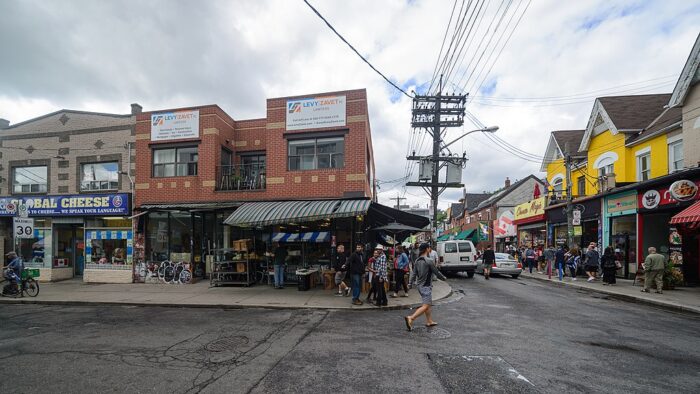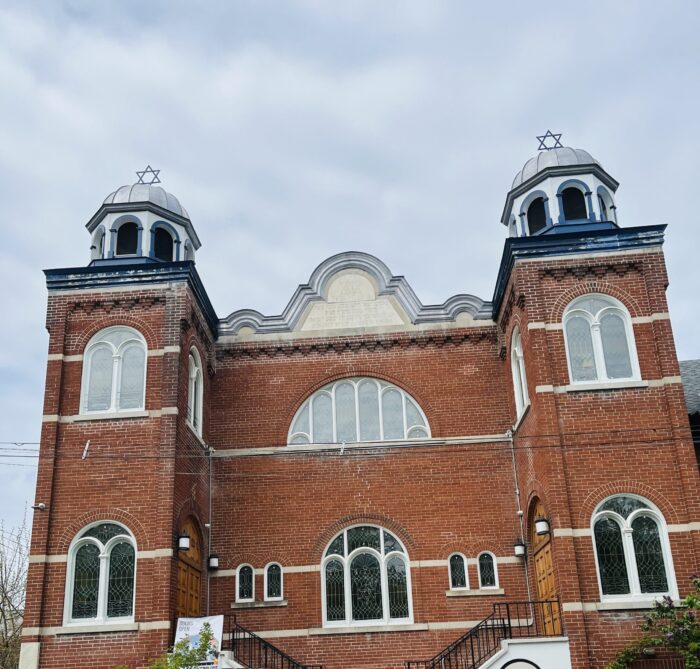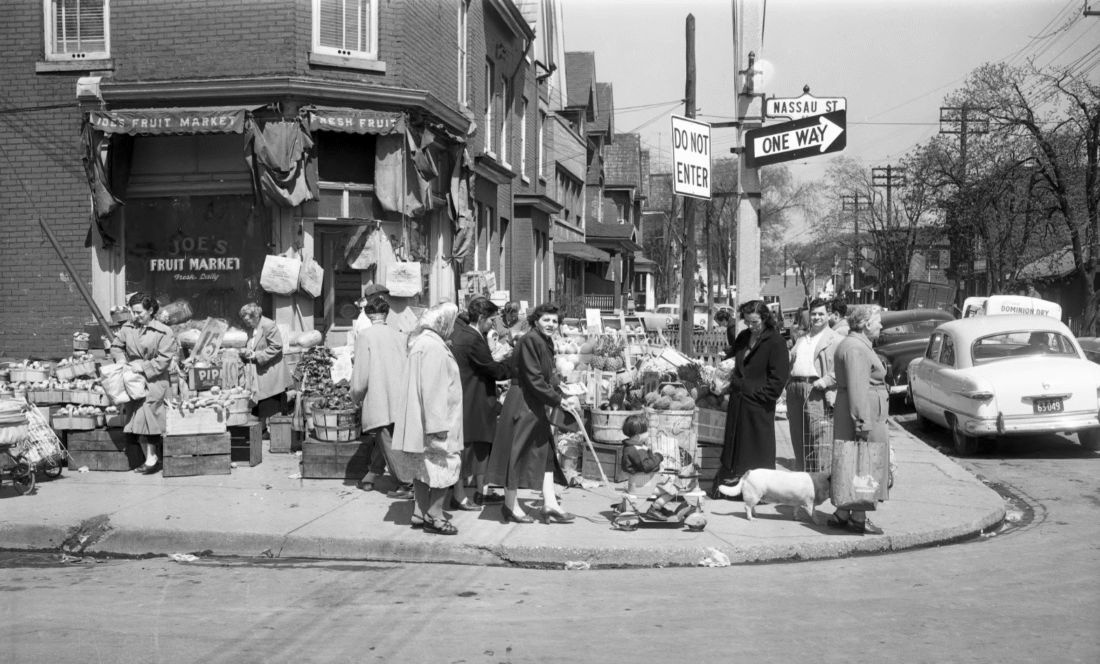It’s the “last remnant” of old Toronto, according to former Toronto mayor John Sewell. Kensington Market, a throwback to the 1920s and 1930s, is a vibrant reminder of what parts of Canada’s largest city looked like about a century ago.
Exuding color, character and charm, and located within a small area bounded by College, Spadina, Dundas and Bathurst streets, Kensington is probably the closest thing to a village in Toronto.
I know it well, having shopped and cycled through it since the late 1970s.
Stuart Clarfield explores this quirky enclave in Kensington Market: Heart of the City, an absorbing documentary that will be screened at the Toronto Jewish Film Festival, which runs until June 15.
As he points out, Kensington — a major tourist attraction — is always changing and evolving. Originally populated by British and Irish folk, it was subsequently the center of the Jewish community.
During the period after World War II, immigrants from Portugal, Hungary, China, the Caribbean islands and Vietnam flooded into the neighborhood.
That Kensington still exists is a stroke of good fortune.
During the 1960s, developers eager to build apartment buildings and detached and semi-detached homes coveted it. City council, appreciating its historic value, stopped them in their tracks.
Today, Kensington is under tremendous development pressure yet again. High-density condominiums are sprouting up on College Street, partly walling in the market.
Beyond this problem, Kensington faces an affordability crisis as prices and rents soar to stomach-churning levels and gradually force out the down-to-earth mom-and-pop shops that used to be the mainstay of the market.
Judging by the tone and thrust of his film, Clarfield clearly loves Kensington and hopes it can survive as a unique neighborhood in a fast-growing metropolis.

He regards it as a melting pot whose unwavering motto is inclusivity. In his quest to flesh out this theme, he interviews a wide variety of people financially invested in Kensington. Tom Mihalek of Tom’s Place clothing store and Ossie Pavao of the Casa Coffee cafe are among the interviewees.
A brief portion of the film is devoted to its Jewish antecedents. Once known as the Jewish market, Kensington attracted East European Jewish immigrants, who set up shops and stalls, or toiled in the nearby garment district.
Synagogues abounded. One of the grandest ones, the Kiever shul, still stands after 98 years. Established by immigrants from Kyiv, the capital of Ukraine, it is an eye-catching blend of Romanesque and Byzantine architectural styles.

Kensington was occasionally the focal point of fisticuffs, which broke out when antisemitic thugs invaded the market and picked fights with Jewish boys ready and able to confront them on their home turf.
That era of racial animosity has vanished as Kensington has morphed into a multicultural mecca.
Today, a wave of gentrification has inundated Kensington, leading to vastly rising real estate values and increasing instances of sticker price shock. David Pincus, whose family has lived on Nassau Street since 1927, thinks that the market has ceased to be a cheap source of food.
A vintage store owner claims that the only people who can afford its high prices do not really care about its history and culture. An Anglican priest expresses concern that small, independent businesses are being pushed out and replaced by expensive high-end shops, and that gentrification will transform Kensington into a Disney version of itself.
Kensington is a work in progress, and no one knows what it will look like in the future.
Clarfield captures this ambivalency.
